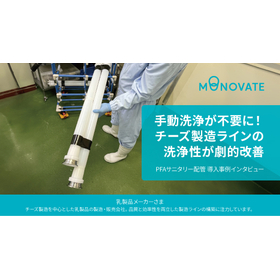[Free booklet] "UN Standards for Dangerous Goods Containers: A Guide"
This explains the international standards (UN standards) for marking with the UN mark based on manufacturing achievements and experience.
This document is available for immediate viewing via download. This booklet summarizes the manufacturing achievements and experiences of Nitto Metal Industry Co., Ltd. We hope it serves as a reference when transporting hazardous materials or purchasing hazardous material containers. Here, we will explain the steel drums (metal containers) among the hazardous material containers (small containers) recommended by the United Nations. The content of this explanation adheres to the "Regulations on the Maritime Transport and Storage of Hazardous Materials" (Ministry of Transport Ordinance No. 30 of 1957, hereinafter referred to as "Hazardous Regulations"). When transporting containers containing hazardous materials by ship or exporting them abroad, containers marked with the UN mark based on UN recommendations are required. Containers with the UN mark are generally applicable to all modes of transportation, including maritime, air, and land. However, when transporting hazardous materials by air or land (by vehicle or railway) other than maritime transport, it is necessary to consider whether they comply with domestic regulations in Japan (such as the Aviation Act and Fire Service Act) and the regulations regarding the transport of hazardous materials in the destination country.
basic information
【Contents】 ○ What is a hazardous material container? What is hazardous material? How to investigate hazardous materials? Classes (categories) of hazardous materials. ○ What is a steel drum for hazardous material containers (small containers)? What kind of hazardous materials can be stored in this container? When deciding on the type of container for hazardous materials, what to consider? Types and shapes of containers. How to distinguish from ordinary containers. Validity period of the UN mark displayed on the container. What to do if there are no suitable containers for hazardous materials or capacity. Number of units or duration that can be manufactured. ○ Manufacturing of hazardous material containers (small containers) Preparation of application documents. Performance testing. Judgment of pass or fail. Issuance of hazardous material container inspection certificate. Submission of UN mark management table. Time and cost. ○ Q&A I want to store this chemical; is it okay? I want to repair or modify the purchased container. I want to use Nitto Metal Industry's general-purpose container as a hazardous material container. I want to treat the inner surface of the container. I want to add a valve later. What should not be stored? What hazardous materials do not require a UN mark? Containers for which performance testing cannot be conducted at Nitto Metal Industry. ○ Explanation of terms ○ Related ministries, associations, and organizations This document is available for immediate download.
Price information
Please contact us.
Delivery Time
OTHER
Please contact us.
Applications/Examples of results
This explanatory document was not created under the guidance of any government ministries, but rather compiled from our company's manufacturing achievements and experiences. We hope it serves as a reference when transporting hazardous materials or purchasing hazardous material containers. The content of this document is explained based on the "Hazardous Materials Regulations" and the "Standards for Hazardous Material Containers" by the Japan Marine Equipment Association, but it does not cover all aspects of these contents. Additionally, it does not delve into detailed specifics. Since we have extracted and explained only parts of the content, we encourage you to refer to the "Hazardous Materials Regulations" for any unclear points or questions you may have. We would also appreciate any feedback via email or fax directed to our company.
Detailed information
-

If there are no suitable containers for hazardous materials or capacity, we will design, manufacture, inspect, and manage the production of dedicated containers. We will apply to HK for new dedicated containers. The inspection methods and manufacturing facilities will be determined based on whether the container is produced only once or continuously.
-

The distinction from ordinary containers is that all containers used for transporting hazardous materials have a visible UN mark. These containers have passed the inspection and testing standards of the Japan Ship Equipment Inspection Association. Additionally, the UN mark is written in a way that is not easily erased.
catalog(13)
Download All Catalogs
[Handbook] UN Standards Hazardous Material Containers Small Containers Steel Drums Explanation Book

"Un container, dangerous goods container, small container, steel drum" manual

【For new employee training and in-house study!】It's okay if you don't know the details! Q&A about stainless steel containers from a specialized manufacturer.
Recommended products
Distributors
Our company, which started in 1957 with the aim of manufacturing stainless steel products and containers for home use, has since expanded into the production and sale of stainless steel tanks for industrial fields such as pharmaceuticals, chemicals, and food. Currently, we design, manufacture, and sell small to medium-sized stainless steel tank units across various industries. Moving forward, as a manufacturer of stainless steel containers and mixers (stirring devices), we will continue to challenge ourselves with sincerity, enthusiasm, and creativity to deliver "one-of-a-kind" products and services to our customers, advancing step by step into the future.



























































